Next Station: London is a flip and write game of redesigning the underground train network in London. You want to connect to as many sites as possible and pass under the Thames. This is a family weight game of drawing lines and creating that network on your map. The game is designed by Matthew Dunstan and published by Blue Orange Games. The game is for 1-4 players and plays in 30 minutes.
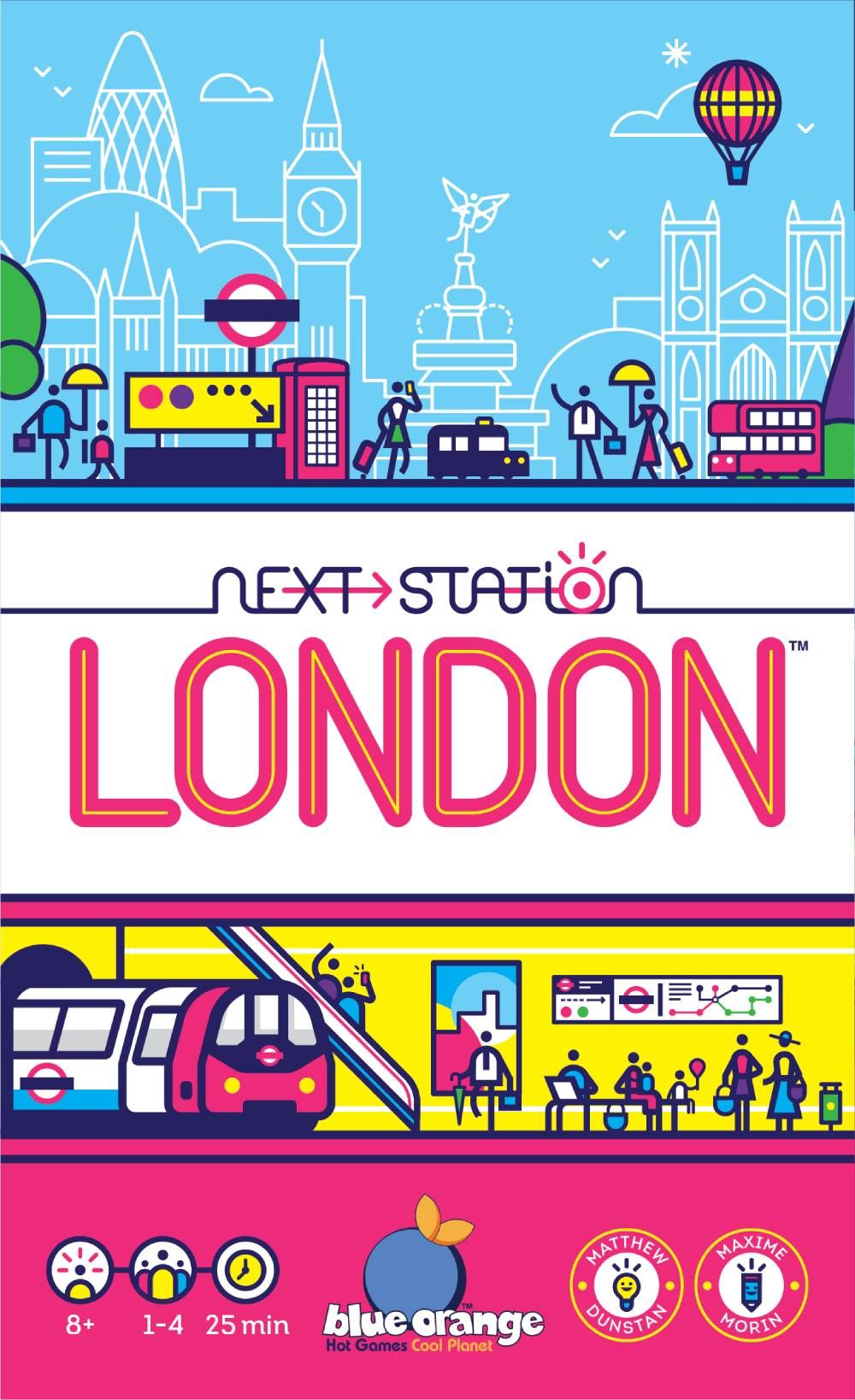
What’s In The Box?
- 1 Pad with maps of London
- 4 Different colored pencils: purple, blue, pink, and green
- 11 Station cards
- 5 Shared objective cards
- 4 Pencil power cards
How’s It Play?
Players will be forming an underground train line on each round of the game. Players want to achieve objectives and visit as many districts as possible to score the most points for each line on their player sheet. The player who does this the best and scores the most points, wins the game.
Each player has their own map sheet and starts by using different color pencils to form that color train line on their sheet. Players start at the departure station that matches their color pencil. The station cards are shuffled and are flipped over one by one. When a shape is shown on a card, you need to connect your departure location to a matching location however far away with a line. You cannot cross over other shapes, and you need to follow the lines on the grid shown. More cards are flipped over and you do the same connecting one end or the other with the new shape.
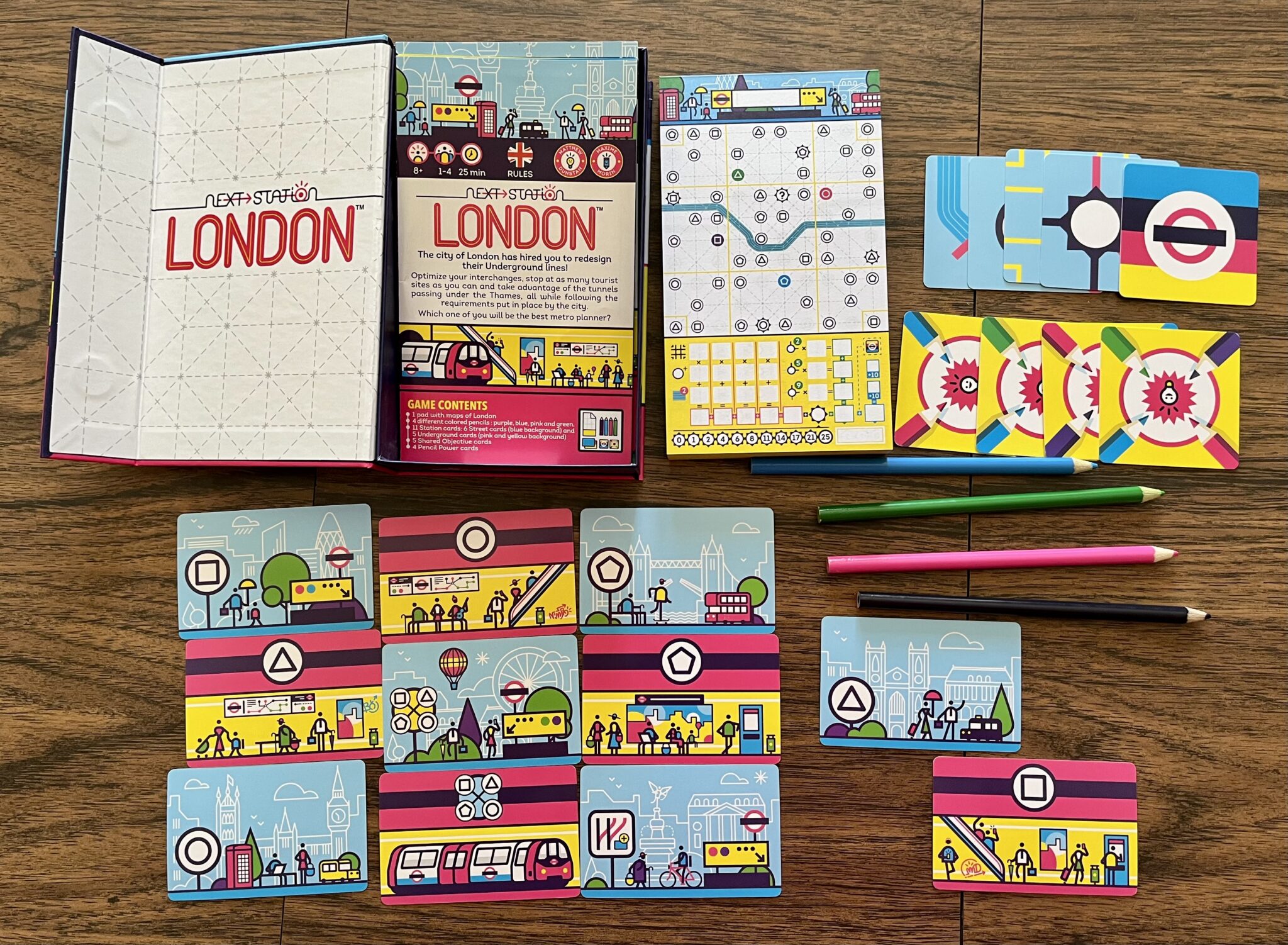
Special cards can be revealed which might break some rules like a wild where you can choose which shape to use, or a break where you can draw a line coming from the middle of your track. After 5 pink and yellow cards are drawn that train line is finished and scored. Your scored is done taking how many districts you have visited (there are 13 total) times the district with the most number of stops, plus how many times the line passes over the river.
Players then pass their pencils clockwise and then start a new line with their new color starting from its departure station. The cards are shuffled again and that round continues until 5 pink and yellow cards have been flipped over. This deck has 11 cards total, so there can be various number of cards drawn each round. This depends all depends on where the last pink and yellow card falls in the deck, to end the round. It could be the 5th cards or the 11th card. This is done for 4 colors in 4 rounds.
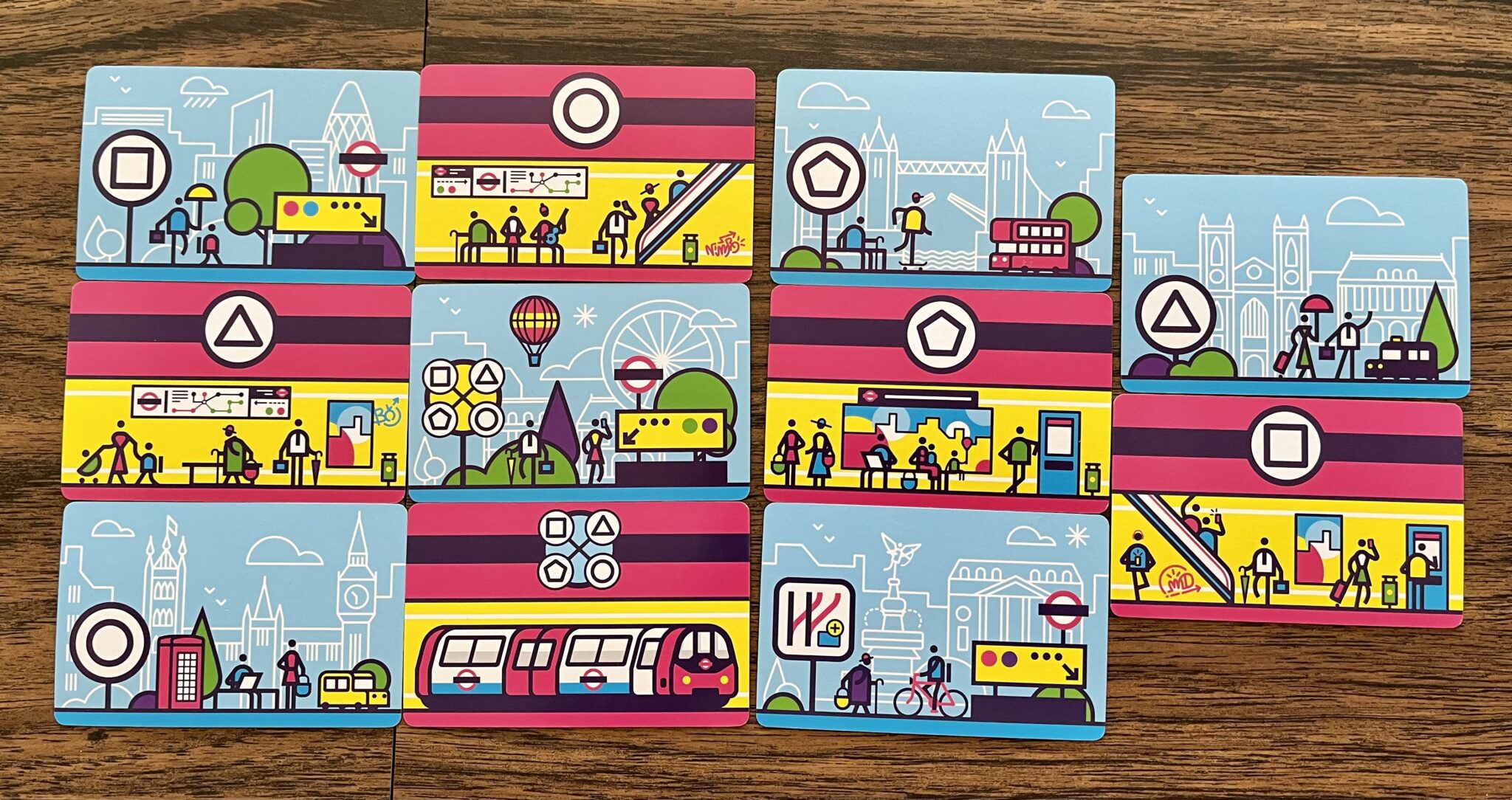
Players add up their 4 rounds worth of points. Players check to see how many tourist sites total of any color they have visited and score the points associated with it. Lastly, interchange points that connect different lines score the shown points for the number of times this happens on your map. The player with the most points then wins the game.
You can play with shared objective cards for a more advanced module, add in pencil powers, or also play the game solo.
The Verdict
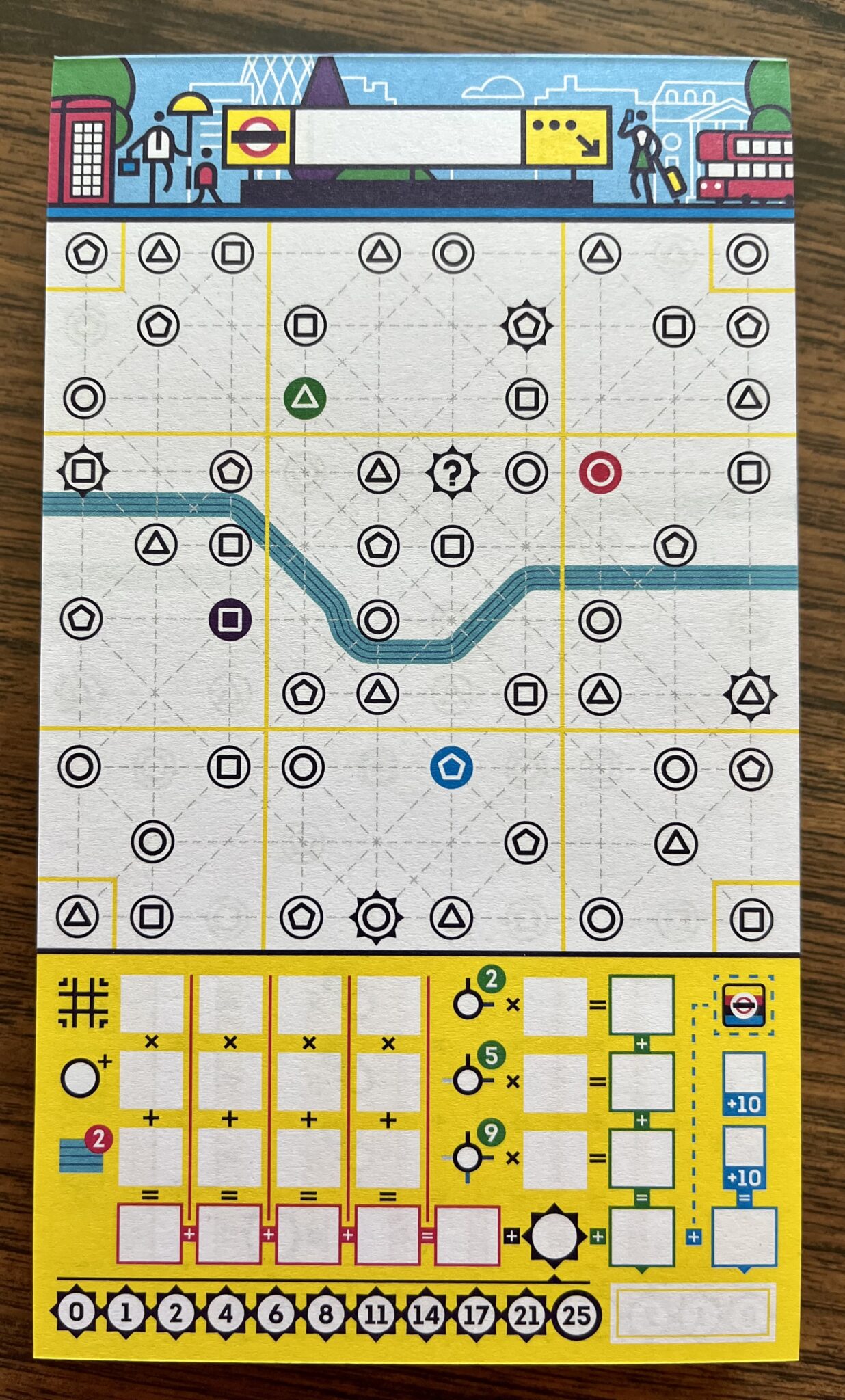
Next Station: London is a nice and fast game with 4 chapters in it that lets you form 4 different train lines, and as the game continues you will be trying to score the most points for that line along with trying to gain some bonus points to connect it with the others. Be careful though, as you don’t want to get stuck not building your line due to the other lines getting in the way.
I really like how there are 11 cards but depending on the random shuffle, you might get certain cards or you might not depending on how they come out. This might make one line better than another, but you just try to build it to score the most points you can. If only 5 or 6 cards are flipped that is the same for others as well.
Next Station: London was a little hard for my 5 and 7 year olds to understand as far as the strategy, but I still think its something we can get back to the table to enjoy in the future and they will learn what they are doing as well continue to play it. I’m glad it’s like this because if it was less complex, it probably wouldn’t get back to the table much due to that.
The split and wild cards really help to give something different rather than just shapes to connect, and then the locations on the map are spread out strategically to make hard decisions. At first I tried to spread out to the most regions on the map, but when I do 8 times 2, that only score me 16 points. But when I do 5 times 5, that scores 25 points, so staying in one region to maximize your points can be good and you can also visit the spike locations to help score those points as well.
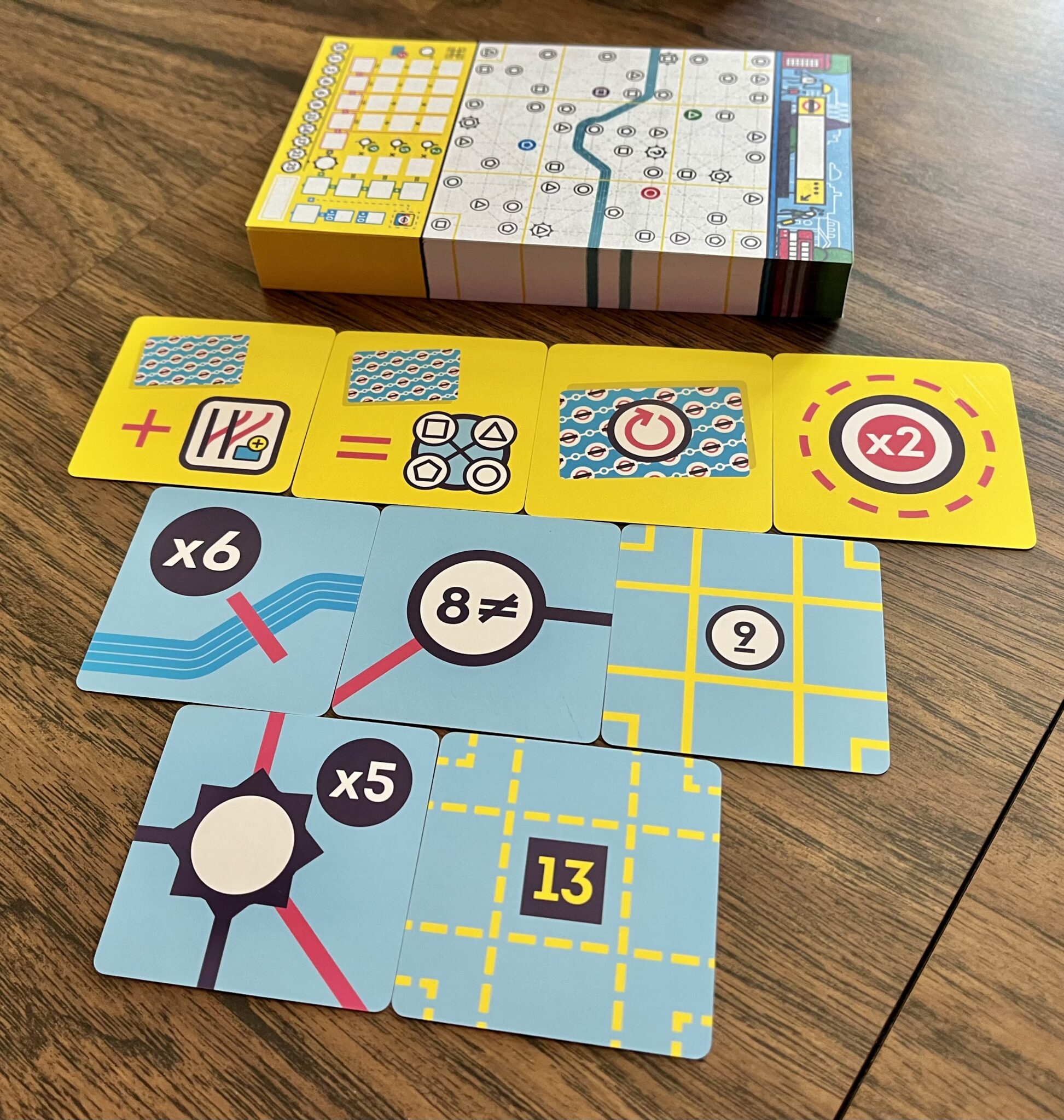
There are many roll and write games that put a map and let you make a route to score points. I actually think Next Station: London is one of my favorites due to the fact you are making 4 routes, they interact with each other, and the game doesn’t run too long. I like how you can also add variants to make it more interesting, which will keep getting this game to my table.
Images via Orange Blue Games
Have strong thoughts about this piece you need to share? Or maybe there’s something else on your mind you’re wanting to talk about with fellow Fandomentals? Head on over to our Community server to join in the conversation!

